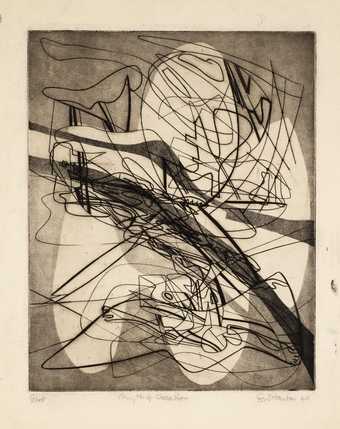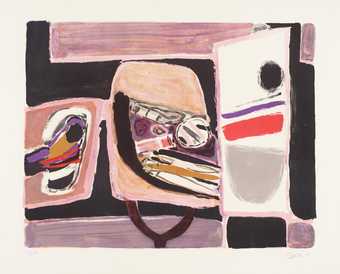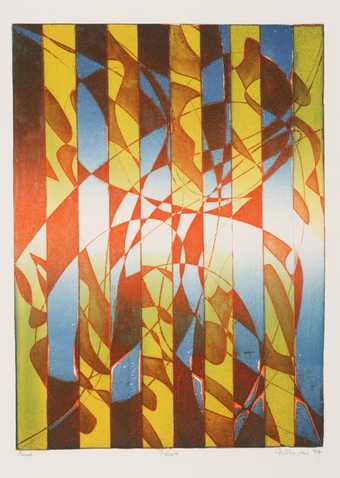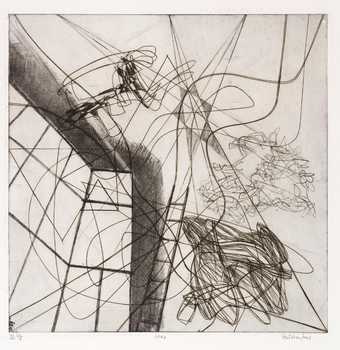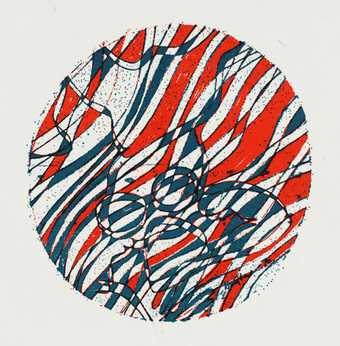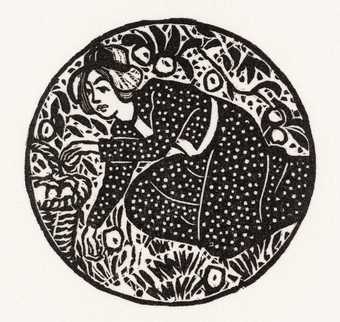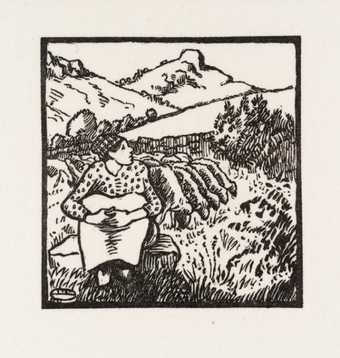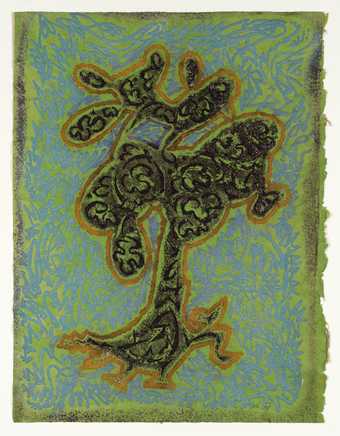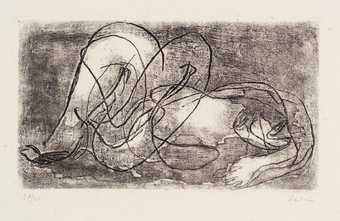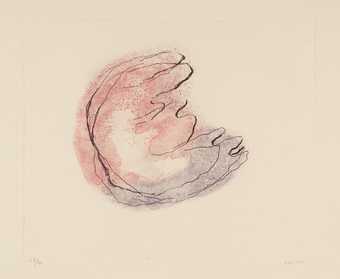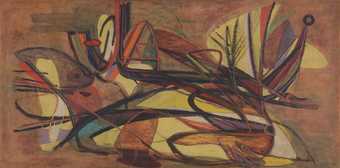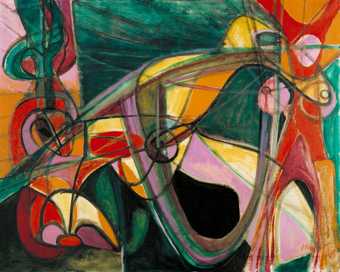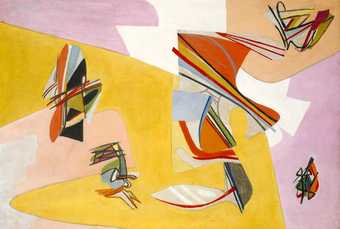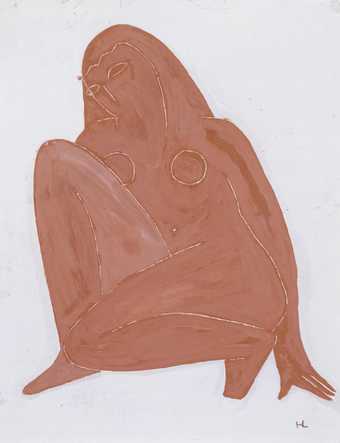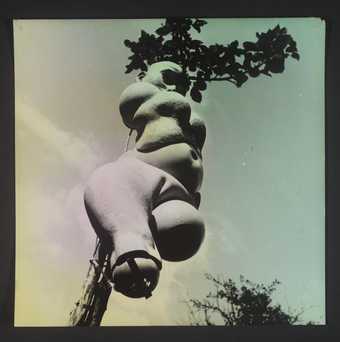
In Tate Britain
Prints and Drawings Room
View by appointment- Artist
- Stanley William Hayter 1901–1988
- Medium
- Engraving on paper
- Dimensions
- Image: 302 × 187 mm
- Collection
- Tate
- Acquisition
- Purchased 1972
- Reference
- P07028
Display caption
Hayter's interest in the combination of chance and spontaneous creativity is conveyed in the titles of these two works: Hunt the Needle and Myth of Creation. An element of controlled design is also evident, particularly in Hunt the Needle where a woman's anatomical features clearly emerge from the tangled lines. The prints demonstrate the technical refinement that made Hayter one of the century's most innovative printmakers. His Paris workshop, Atelier 17, was a focus for Surrealist experimentation, and American artists drew upon his expertise when he established a workshop in New York in the 1940s.
Gallery label, August 2004
Does this text contain inaccurate information or language that you feel we should improve or change? We would like to hear from you.
Catalogue entry
Stanley William Hayter 1910-1988
P07028 Le Chas de l’aiguille 1946
Inscribed ‘3/30’ b.l., ‘Le Chas de l’Aiguille’ centre, ‘S. W. Hayter 46’ b.r., and on mount ‘5’ b.l. ‘13¿ x 8¿’ b.c., and ‘Own Mount’ b.r.
Engraving on copper, 13¿ x 8¿ (33.3 x 21.3).
Purchased from Christopher Drake Ltd (Grant-in-Aid) 1973.
Coll: The artist’s collection; Christopher Drake Ltd.
Exh: Whitechapel Art Gallery, November 1957 (169); Christopher Drake Ltd, October-November 1973 (18, repr.).
The artist told Christopher Drake that this work is essentially an erotic image, its title being a pun upon the female anatomy. In a letter to the compiler (24 May 1974) the artist stated that it is ‘really an acrobatic female and the “eye of the needle” might refer to the needle of Gammer Gurton rather than of the Bible.’ (Gammer Gurton’s Needle is a bawdy, vigorous sixteenth-century comedy probably written by John Still, its plot being the search for Gammer’s needle and its discovery in the seat of Gurton’s breeches.)
Published in The Tate Gallery Report 1972–1974, London 1975.
Explore
- abstraction(8,615)
-
- from recognisable sources(3,634)
-
- figure(2,270)
- formal qualities(12,454)
-
- spontaneity(112)
- female(1,681)
You might like
-
Stanley William Hayter Myth of Creation
1940 -
Pierre Celice Les Savis de L’Atelier
1968–9 -
Stanley William Hayter Pillars
1974 -
Stanley William Hayter Hex
1981 -
Stanley William Hayter Cover Illustration to ‘Tides’ by John Montagu
1970 -
Lucien Pissarro Christmas Card
1925 -
Lucien Pissarro La Bergère
1929 -
André Masson Les Hain-Teny
1955, published 1956 -
Jean Fautrier Reclining Woman IV
c.1942, published c.1960–4 -
Jean Fautrier Baby Mine
1947, published c.1960–4 -
Stanley William Hayter Deliquescence
1935 -
Stanley William Hayter Untitled
1946 -
Stanley William Hayter Ophelia
1936 -
Henri Laurens Seated Woman
c.1926–30 -
Hans Bellmer The Doll
c.1936

